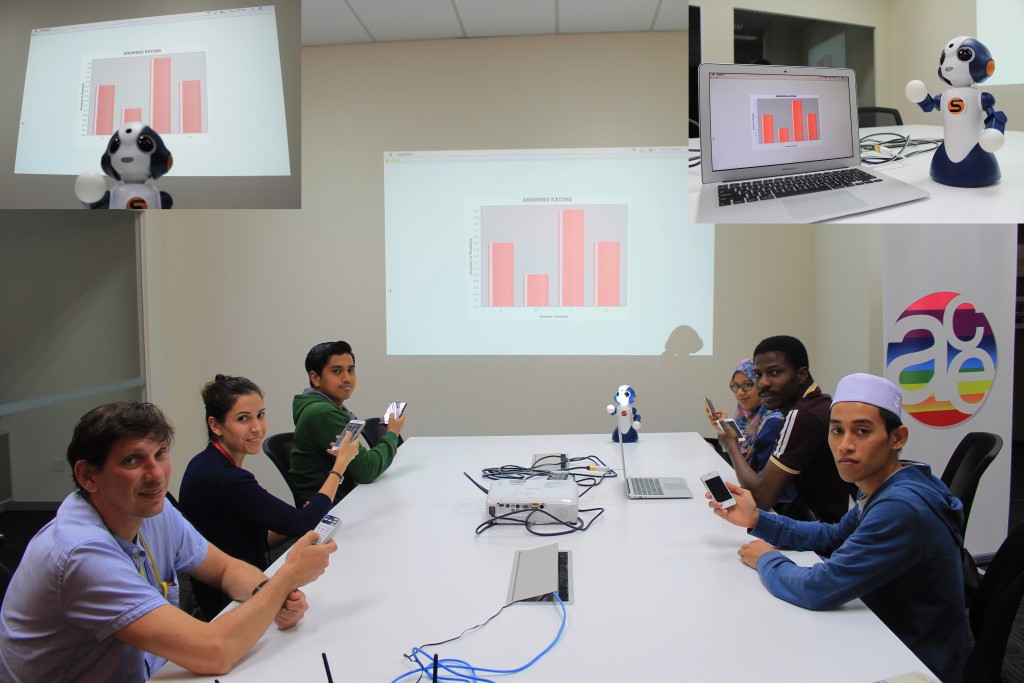By Bosede Edwards*, Bazli Tukimat, Nosiba Khougali, Rui Prada, Adrian David Cheok
Current developments in Artificial Intelligence (AI), Machine Learning and Robotics suggest a future of fully shared social spaces, including learning environments (LEs), with robotic personalities. Today’s learners and teachers should be prepared for such a future. Research findings on AI in Education (AIED) support richer learning experiences with embodied agents. There are reports on robot as peers, classroom assistants or instructional materials mostly based on a one-robot-one-student interaction style, whereas current demands support collaborative approaches to learning. Robots as instructors are novel, however, the demands for agency, affective capabilities and classroom control remains key challenges. Mr. Sota is a robot teacher with capabilities for social interaction and classroom control. Sota teaches basic Chemistry within a collaborative learning scenario involving multiple human learners and a pedagogical approach based on social learning and learning-by-teaching. The technique supports instructional scaffolding, learner control and conceptual understanding. Future improvements will focus on other key concepts in learning, types of learners, interaction styles and LEs.

